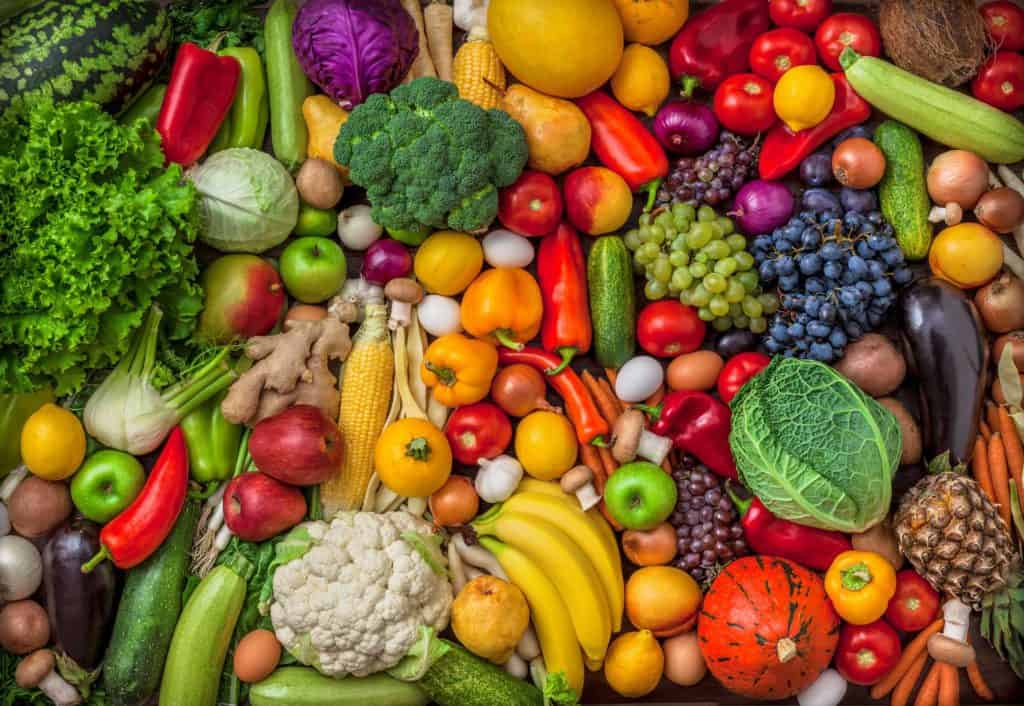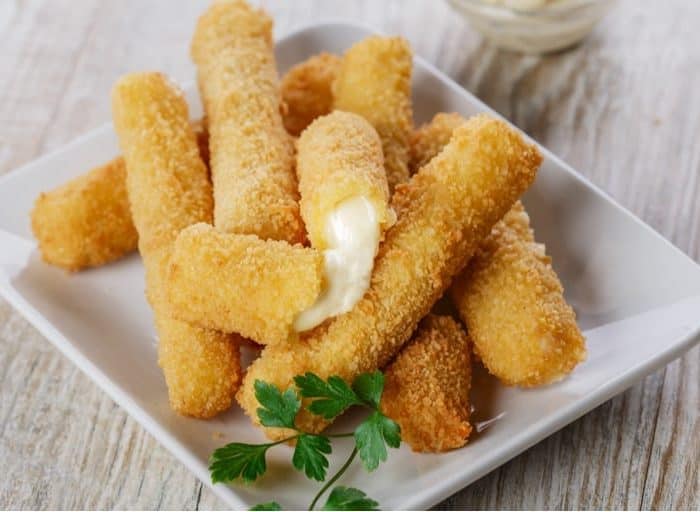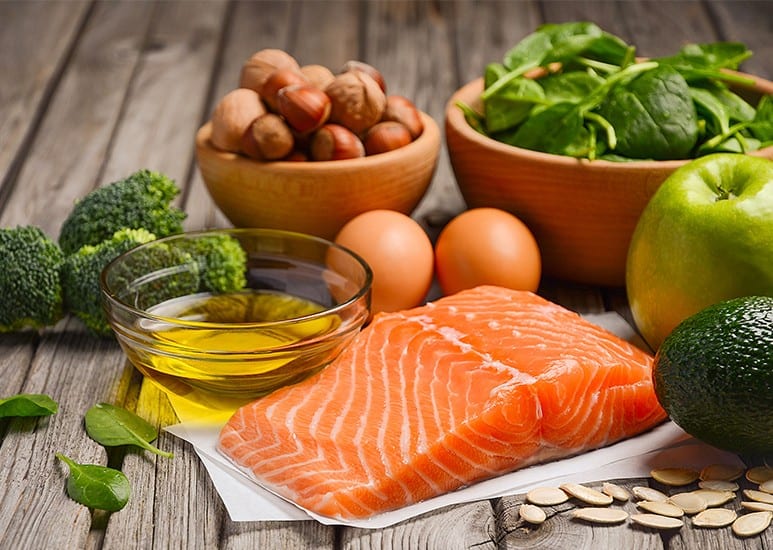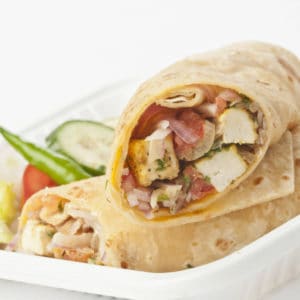Are you a vegetarian on the lookout for the many benefits of a ketone-monitored diet? Unlike the popular notion, the veggie ketonic compound monitored lifestyle is definitely doable. We present to you our version of a vegan’s guide to the ketogenic diet.
What is a Keto Diet?
The Keto Diet is a specialized diet that involves a reduced intake of carbohydrates and a moderate intake of proteins and a high proportion of fat consumption and the diet is considered to be an accelerated means of weight loss.
The reduction of carbohydrates puts the body into a metabolic state called ketosis. When this happens, your body becomes incredibly efficient at burning fat for energy. It also turns fat into ketones in the liver, which can supply energy to the brain.
Scientific fact: The Keto diet is proven to be 2.2 – 3 X more effective in helping you healthily lose weight so it is evident that the Keto Diet is not just a healthy diet but it’s a healthy lifestyle too.
How Does The Keto Diet Work?
The keto diet plan is based on the simple principle of depleting the carbohydrates, which are the body\’s primary source of energy and enable it to burn fat for fuel instead, thereby maximizing weight loss.
When you consume foods that contain carbohydrates, the body converts those carbohydrates into glucose, or blood sugar, which it then uses for energy. Because glucose is the simplest form of energy for the body to use, it’s always used for energy before your body turns to stored fat for fuel.
On a keto diet, the goal is to reduce carbohydrate intake so that the body starts to break down fat for energy. When this occurs, fat is broken down in the liver, thereby producing ketones, which are by-products of your metabolism. These ketones are then used to fuel the body in the absence of glucose.
When you eat less than 50 grams of carbs a day, your body eventually runs out of fuel (blood sugar) it can use quickly. This typically takes 3 to 4 days. Then you’ll start to break down protein and fat for energy, which can make you lose weight.
This whole process is referred to as the term ketosis, a metabolic state that your body enters while you’re successfully on a keto diet.
What Is The Vegetarian Keto Diet?
For their potential health benefits, vegetarian and ketogenic diets have received substantial research (1Trusted Source, 2Trusted Source).
A high-fat, low-carb diet that has recently gained a lot of popularity is the ketogenic, or keto, diet. Despite the fact that it frequently includes animal products including meat, fish, and fowl, it can be modified to meet a vegetarian diet.
Everything you need to know about the vegetarian keto diet is included in this article.
Benefits Of The Vegetarian Keto Diet
Promotes weight loss
Both restricted meal plans are associated with loss of mass. This dietary regime has a high amount of healthy fats which also keep you feeling fuller for a long to reduce hunger and appetite.
Protects against chronic diseases
Veg-restricted meal plans have been linked to a reduced risk of several chronic conditions. They are also associated with a lower risk of cancer and improved levels of several heart disease risk factors, including BMI, cholesterol, and blood pressure
Supports blood sugar control
Both meal monitoring plans support blood sugar control. The monitored and managed ketonic compounds have the ability to improve the body’s blood sugar regulation and increase its sensitivity to insulin, a hormone involved in blood sugar control
Foods To Eat
A healthy veggie ketogenic diet should include many vegetables which lack starch, healthy fats, and protein sources, such as:
- vegetables with no starch: mushrooms, spinach, broccoli, zucchini, kale, cauliflower, and bell peppers
- Healthy fats: olive, coconut, avocado, MCT oils, and avocados.
- Nuts: walnuts, macadamia nuts, almonds, pistachios, cashews, and Brazil nuts
- Seeds: chia, hemp, flax, and pumpkin seeds
- Nut butter: almond, peanut, pecan, and hazelnut butter
- Full-fat dairy products: milk, yogurt, and cheese
- Protein: eggs, tofu, tempeh, natto, and nutritional yeast
- Low-carb fruits: berries, lemons, and limes
- Seasonings and Herbs: Rosemary, basil, paprika, salt, pepper, turmeric, oregano, and thyme
Foods to avoid
High in carbohydrates edibles like grains, fruits, legumes, and starchy vegetables are permitted only in small amounts, if they fit into your daily cellulose allotment.
You should eliminate the following foods:
- Meat: beef, pork, lamb, goat, and veal
- Poultry: chicken, turkey, duck, and goose
- Fish and shellfish: salmon, tuna, sardines, anchovies, and lobster
Here are some foods that you should limit:
- Starchy vegetables: potatoes, yams, beets, parsnips, carrots, and sweet potatoes
- Sugar-sweetened beverages: sweet tea, soda, sports drinks, energy drinks, and juice
- Grains: bread, rice, quinoa, oats, millet, rye, barley, buckwheat, and pasta
- Legumes: beans, peas, lentils, and chickpeas
- Fruits: apples, berries, oranges, melons, apricots, bananas, plums, and peaches
- Condiments: marinades, barbecue sauce, ketchup, honey mustard, and sweetened salad dressings
- Processed foods: granola, chips, cookies, crackers, and baked goods
- Sweeteners: brown sugar, white sugar, honey, maple syrup, and agave nectar
- Alcoholic beverages: beer, wine, and sweetened cocktails
Vegetarian Keto Snack Options
Few simply enjoyable tidbits that you can eat between meals:
- zucchini chips
- celery with peanut butter
- roasted pumpkin seeds
- flax crackers with sliced cheese
- mixed nuts
- chia seed pudding topped with unsweetened coconut
- carrots with guacamole
- whipped cream with blackberries
- full-fat cottage cheese with black pepper
- full-fat Greek yogurt with walnuts
Which Vegetarian Diets Work Best With Keto?
Ketogenic can be incorporated into most vegetarian lifestyles. Even a vegetarian keto approach is possible, but it’s a little more challenging. By removing all animal products, vegetarians usually rely on a mix of grains, legumes, and seeds to cover their essential amino acid needs. These foods aren’t a good fit on a ketonic compound monitored plan, which is usually restricted to 20 grams of net carbs. To skip all animal products, the “Eco-Atkins” can be one good option.
An Overview of The Keto Diet For Vegetarians
To implement the changes correctly, follow these rules:
- Limit your total cellulose intake to 35 grams or less per day.
- Remove all animal flesh from your restricted meal plan (e.g., meat, fish, and poultry).
- Eat plenty of low-carb vegetables.
- Get at least 70% of your calories from fat.
- Consume plant-based proteids, eggs, and high-fat dairy to meet your amino acid needs
- Take nutrient supplements that you may not be getting enough of like Vit D3, DHA & EPA, zinc, and iron.
- A Keto calculator should be used to find out the calorie and macronutrient needs.
- Continue reading for more precise vegan ketogenic diet regime recommendations
Action Plan to Begin a Vegetarian Keto Diet
Restrict carbohydrates
In order to reach a monitored Ketonic compound state and stay there, it’s best to limit your net cellulose intake to 20 grams per day. This means you’ll need to cut out most of the popular veggie polypeptide sources, such as pulses, buckwheat, legumes, and quinoa. These foods have high cellulose so they cannot be part of a ketogenic lifestyle. Also stay clear of milk, starchy vegetables, and fruits, other than perhaps a small amount of berries.
Include a high-quality protein source at every meal
Combining ketogenic-friendly low-carb plant nitrogenous matter, such as nuts and seeds, with animal nitrogenous sources like dairy and eggs can improve the quality of a vegan dietary plan. You can opt for the following sources:
- Greek Yogurt
- Hemp Seeds
- Eggs
- Cottage Cheese
- Peanut Butter
- Almond Butter
Keep in mind that you’ll get small amounts of protein from vegetables as well. Most vegetables provide about 2 grams of protein per cup. Soy products, such as tofu, can also be a good source of plant-based amino acids.
Best Vegetables for Keto
- Spinach: rich in iron, potassium, and magnesium, with 1 gram of net carb per serving
- Zucchini: a good source of vitamin B6, vitamin C, and potassium, as well as a fantastic noodle substitute, with 3 grams of net carbs per serving
- Avocado: excellent source of potassium, magnesium, and fiber, with 2 grams of net carbs per serving
- Brussels sprouts: rich in vitamin C, potassium, and folate, with 5 grams of net carbs per serving
- Cauliflower: a great source of vitamin C and fiber and the perfect keto-friendly sub for mashed potatoes and rice, with 4 grams of net carbs per serving
Use healthy oils for cooking and when making salad dressings
Healthy fats improve food’s texture and can help you stay full and satisfied for hours. In addition, they’re necessary for the proper absorption of the fat-soluble vitamins A, D, E, and K.
Since fats contribute most of your calories during ketosis, it’s important to choose healthy ketone fats and condiments, such as butter, ghee, coconut oil, olive oil, and avocado oil for meal preparation and at the table.
Season your food with different herbs and spices
Cooking with herbs and spices can help increase the variety of a vegan diet. They are also an additional source of micronutrients and provide very few net carbs.
How to avoid nutrient deficiencies on a vegetarian keto diet
Vegans often rely on grains and legumes to meet their daily micronutrient needs. On a veggie ketogenic dietary regime, where these foods are restricted, make sure to consume adequate amounts of omega-3 fats, iron, calcium, vitamin B12, vitamin D, zinc, potassium, and magnesium.
Try to include the foods below on a regular basis to provide your body with the micronutrients ketogenic vegans sometimes don’t get enough of:
Nuts & seeds
- Almonds
- Chia seeds
- Flax seeds
- Hemp seeds
- Pumpkin seeds
- Walnuts
- 100% dark chocolate
- Unsweetened cocoa
Vegetables
- Artichokes
- Broccoli
- Brussels sprouts
- Kale
- Mushrooms
- Spinach
- Swiss chard
Dairy
- Plain greek yogurt
- Cheese
Fruits
- Avocado
- Olives
How to Get Enough Fat on the Vegetarian Keto Diet
Eggs and high-fat dairy will be a significant component of most of your ketone-monitored meals, but might not be able to source your fat requirement entirely. Here’s a brief list of the oils you can use and what you can use them for:
- Avocado Oil
Avocado oil has a ton of healthy monounsaturated fats. It is perfect for cooking, baking, and deep-frying. You can use it to fry the vegan tater tots that you’ll learn about later in the article. - Coconut Oil.
This oil provides you with an abundance of fatty acids that are the ideal fuel source for people in ketosis. It is an excellent oil for fat bombs, desserts, and cooking and baking. - MCT Oil.
This oil is commonly derived from coconut oil and palm oil. Add it to your salad dressings, sauces, smoothies, fat bombs, and hot drinks like coffee or tea for a potent energy boost. - Olive Oil.
Olive oil is one of the healthiest oils you can consume. In fact, a recent 2018 study found extra virgin olive oil to be the safest and healthiest oil for cooking, baking, and deep-frying.
By incorporating a combination of these plant-based oils and fat-packed plant foods, you won’t even need eggs and high-fat dairy to meet your fat needs.
The Best Vegetarian-Friendly Protein Sources for The Ketogenic Diet
Regardless of how much you love cheese and how many ways you can prepare eggs, relying on them is not necessary either. You can just as easily meet your protein needs with these vegan protein sources:
-
- Tofu
Tofu is made from soybeans and is high in protein and calcium. The best part is you can use it as a convincingly tasty substitute for meat, poultry, and fish. - Tempeh
Tempeh is a fermented form of soy that is firmer than tofu and has a more grainy texture, making it a great substitute for fish and ground beef. - Seitan
Seitan or “wheat meat” is a vegan meat substitute made from wheat gluten, soy sauce, ginger, garlic, and seaweed. This vegan “meat” is high in Amino acids, low in fat, and a good source of iron. - Nuts And Seeds
Many nuts and seeds are packed with amino acids as well. They are packed with them and are relatively low in carbs. - Protein Powders
When it comes to buying such powder, 100% grass-fed whey and organic pea isolate tend to be the best options.
- Tofu
If you incorporate all the above-mentioned factors in your meal plan, you would surely be able to achieve your health goals, without the consumption of any form of meat. A veggie ketogenic dietary regime is extremely doable, provided you are well-informed. We hope you found all your answers here, and are now sure of what to eat and what not to on a low-carb diet.
Do you wish to embark on this low-carb journey too? Get yourself started today and Stay tuned for more such ketonic compound-monitored weight loss journeys, health content, and recipes! Also, don’t forget to follow us on Instagram for the daily dose of the Ketogenic Lifestyle!














